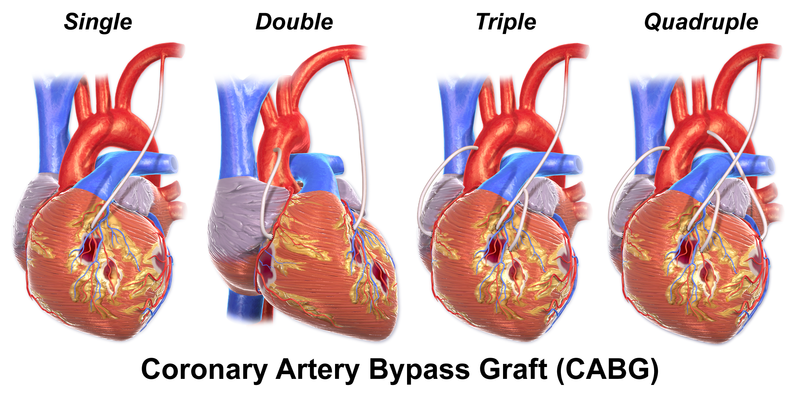CABG vs. PCI in left main disease
Contents
A significant left main stem (LMS) stenosis is considered to be a lesion occupying over 50% of the vessel diameter. LMS stenosis is theoretically an attractive target for PCI because it is the most proximal component of the left coronary circulation and because of its relatively large diameter. However, in reality, two important anatomical features carry important qualifications about the likely success of PCI and CABG in LMS stenosis: (a) LMS stenosis occurs as an isolated lesion in only 6–9% of patients, whereas over 70–80% of patients also have multivessel CAD [31–39], thereby potentially enabling more complete coronary revascularization with CABG than with stenting; (b) most LMS stenoses (40–94%) occur in the distal segment of the artery and extend into the proximal coronary arteries [31–39] and such bifurcated or trifurcated lesions have a highrisk of restenosis [39], while acute occlusion at this site can have catastrophic consequences. Only two groups have reported registry data in patients with LMS stenosis undergoing CABG or PCI with DES [35, 38] with at least 1-year follow-up. In the Bologna registry of 311 patients with LMS stenosis, 68% were deemed suitable for either PCI or CABG, 19% for CABG only, and 13% for PCI only [38]. At a median follow-up of 14 months, the mortality was 12% in 154 CABG and 13% in 157 PCI patients (but 3%, respectively, in low-risk patients). The repeat revascularization rate was, respectively, 3% for CABG and 26% for PCI. In an Italian registry of 249 LMS patients, there was no difference in 1-year mortality after adjustment for baseline characteristics in the 107 PCI and 142 CABG patients, who were significantly older (68 vs. 64 years) with a higher proportion of renal failure (8% vs. 2%) [35]. Again, however, repeat revascularization was 20% in PCI vs. 4% of CABG patients, probably reflecting the fact that 87% of patients had bifurcation disease [35].
To date, only one randomized trial of PCI vs. CABG has been reported [40]. The LEMANS (Study of Unprotected Left Main Stenting vs. Bypass Surgery) trial was a randomized trial of 52 PCI (35% with DES) and 53 CABG patients of whom approximately 60% had distal LMS stenosis, and of whom 75% of the CABG group and 60% of the PCI group had 3-vessel CAD (P=0.08). Although, as expected, the CABG group had more short-term complications within the first month after surgery, the primary outcome of MACE at one year was similar in the two groups, as 15% of the PCI group required further PCI or CABG. Furthermore, the fact that only 72% of the CABG group received an internal mammary artery graft despite its well established survival benefit raises questions about the quality of the surgery in the LEMANS trial, as use of this graft should approach 100% in contemporary practice. Results of a randomized trial of DES vs. CABG for LMS stenosis (the SYNTAX [Synergy between PCI and Taxus and Cardiac Surgery] trial) were recently reported [30]. The outcomes in patients with isolated left main disease and left main plus a single additional vessel tended to favor PCI. On subgroup analysis of the LM patients, the overall 12-month MACCE event rate was lower with CABG (13.7% vs. 15.8%), although patients with LM only (8.5% vs. 7.1%) and LM+1-VD (13.2% vs. 7.5%) seemed to do slightly better with PCI. Patients with LM+2-VD (14.4% vs. 19.8%), LM+3-VD (15.4% vs. 19.4%), or 3-VD alone (11.5% vs. 19.2%) seemed to do better with CABG than PCI.
In summary, in light of recent evidence, PCI with DES may emerge as a reasonable alternative to CABG in the near future, especially for patients with isolated unprotected LMS disease or LMS+1-VD. However, the catastrophic consequences of stent restenosis, acute and late stent thrombosis [29, 41, 42] should be discussed at length prior to taking such an intervention.


Comments 2
Pingback: The MASS II Study - Cardiac Health
Pingback: Optimal Medical Therapy with or without PCI for Stable Coronary Disease - Cardiac Health